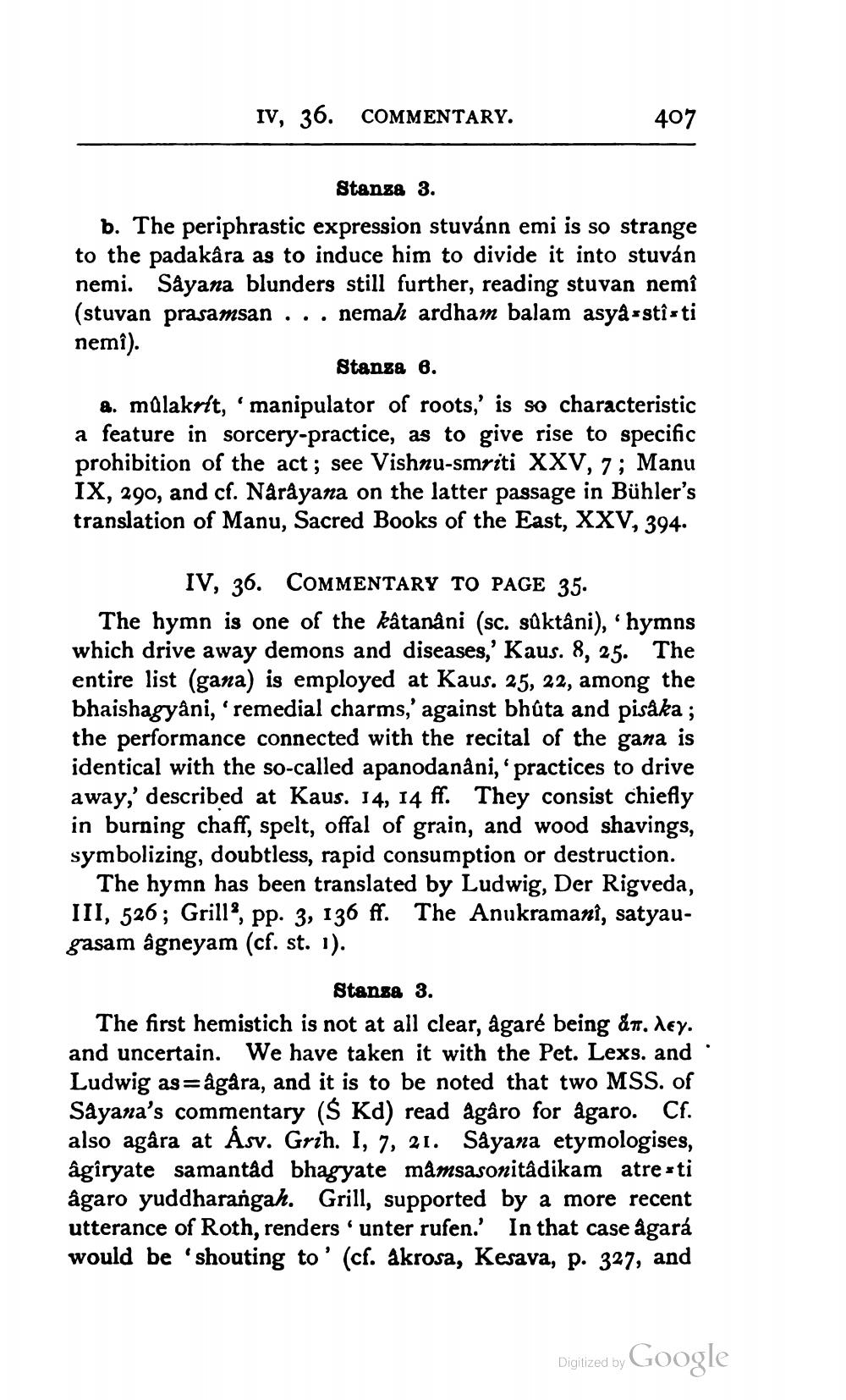________________
IV, 36. COMMENTARY.
407
Stanza 3. b. The periphrastic expression stuvánn emi is so strange to the padakâra as to induce him to divide it into stuván nemi. Sayana blunders still further, reading stuvan nemî (stuvan prasamsan . . . nemah ardham balam asya-stis ti nemî).
Stanza 6. a. mulakrét, manipulator of roots,' is so characteristic a feature in sorcery-practice, as to give rise to specific prohibition of the act; see Vishnu-smriti XXV, 7; Manu IX, 290, and cf. Narayana on the latter passage in Bühler's translation of Manu, Sacred Books of the East, XXV, 394.
IV, 36. COMMENTARY TO PAGE 35. The hymn is one of the katanani (sc. sûktâni), 'hymns which drive away demons and diseases,' Kaus. 8, 25. The entire list (gana) is employed at Kaus. 25, 22, among the bhaishagyani, 'remedial charms,' against bhůta and pisåka ; the performance connected with the recital of the gana is identical with the so-called apanodanâni, practices to drive away,' described at Kaus. 14, 14 ff. They consist chiefly in burning chaff, spelt, offal of grain, and wood shavings, symbolizing, doubtless, rapid consumption or destruction.
The hymn has been translated by Ludwig, Der Rigveda, III, 526; Grill, pp. 3, 136 ff. The Anukramani, satyaugasam agneyam (cf. st. 1).
Stansa 3. The first hemistich is not at all clear, agaré being &n. dey. and uncertain. We have taken it with the Pet. Lexs. and Ludwig as=ågåra, and it is to be noted that two MSS. of Sayana's commentary (Ś Kd) read Agâro for agaro. Cf. also agåra at Asv. Grih. I, 7, 21. Sayana etymologises, âgiryate samantad bhagyate mâmsasonitâdikam atresti ågaro yuddharangah. Grill, supported by a more recent utterance of Roth, renders 'unter rufen. In that case ågará would be 'shouting to' (cf. akrosa, Kesava, p. 327, and
Digitized by
Digjized by Google




